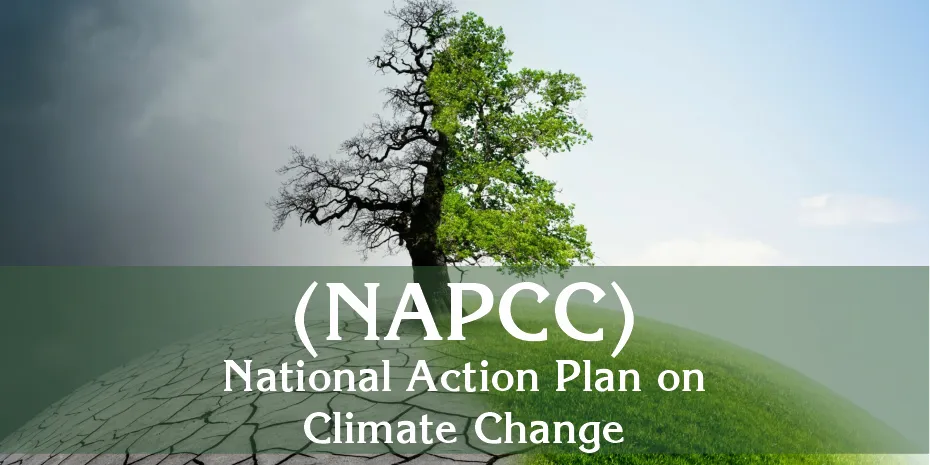India’s National Action Plan on Climate Change has been slow to start and its sectoral missions are not aligned with the schemes the government has announced to tackle climate change. In the middle of an erratic monsoon, in June 2008, India announced its National Action Plan on Climate Change (NAPCC). When it happened, we were just one of the 10-odd countries in the world to have a consolidated policy instrument to tackle climate change.
Contents
- 1 Overview of National Action Plan on Climate Change
- 1.1 What is the National Action Plan on Climate Change?
- 1.2 Sub schemes under National Action Plan on Climate Change
- 1.3 • National Solar Mission (started in 2010 to promote the use of solar power)
- 1.4 • National Mission for Enhanced Energy Efficiency (approved in 2009)
- 1.5 • National Mission on Sustainable Habitat (approved in 2011)
- 1.6 • National Water Mission
- 1.7 • National Mission for Sustaining the Himalayan Ecosystem (approved in 2014)
- 1.8 • National Mission for A Green India (approved in 2014)
- 1.9 • National Mission for Sustainable Agriculture (approved in 2010)
- 1.10 • National Mission on Strategic Knowledge for Climate Change (NMSKCC)
- 1.11 • National Bio-Energy Mission (approved in 2017)
- 1.12 Benefits of National Action Plan on Climate Change
- 2 Other Related Schemes
Overview of National Action Plan on Climate Change
| Name | National Action Plan on Climate Change |
| Also known as | NAPCC |
| Launch by | Former Prime Minister Dr. Manmohan Singh |
| Launch year | 30 June 2008 |
| Nodal Ministry | Ministry of Science and Technology |
| Objective | creating awareness among the representatives of the public, different agencies of the government, scientists, industry and the communities on the threat posed by climate change and the steps to counter it. |
| Number of Mission | 8 national mission |
| Status | Active |
| Sector | Central sector scheme |
| Official website | https://ncdc.gov.in |
What is the National Action Plan on Climate Change?
NAPCC was released by the Prime Minister’s Office (PMO), India in 2008. It states 8 National Missions i.e. National Solar Mission (NSM), National Mission for Enhanced Energy Efficiency (NMEEE), National Mission on Sustainable Habitat (NMSH), National Water Mission (NWM), National Mission for Sustaining the Himalayan Ecosystem (NMSTHE), National Mission for Green India (NMGI), National Mission for a Sustainable Agriculture (NMSA), National Mission on Strategic Knowledge for Climate Change (NMSKCC).
Sub schemes under National Action Plan on Climate Change
• National Solar Mission (started in 2010 to promote the use of solar power)
It was later increased to 100 GW (100,000 MW) in 2015.MNRE has proposed to achieve 60 GW from large and medium-scale solar projects, and 40 GW through rooftop solar projects. Committed to Nationally Determined Contributions (Paris Accord), India made a pledge that by 2030, 40% of installed power generation capacity shall be based on clean sources.It was determined that 175 GW of renewable energy capacity will be installed by 2022.
• National Mission for Enhanced Energy Efficiency (approved in 2009)
The mission document, which was approved in 2010, established the immense energy efficiency potential of India, which was about Rs. 74,000 crores.A recent World Bank study has estimated the country’s energy efficiency market to be at 1.6 lakh crores.
• National Mission on Sustainable Habitat (approved in 2011)
The National Mission on Sustainable Habitat was approved in 2010.
It seeks to promote:
- Improvements in energy efficiency in buildings by extending energy conservation building codes to new and large commercial buildings.
- Better urban planning and efficient and convenient public transport facilitate the growth of medium and small cities.
- Improved management of solid and liquid waste, e.g. recycling of material and urban waste management (like producing power from waste).
The Mission is being implemented through the following programs of the Ministry of Urban Development:
- Atal Mission on Rejuvenation and Urban Transformation (AMRUT)
- Swachh Bharat Mission
- Smart Cities Mission
- Urban Transport Programme
• National Water Mission
The Mission aims to achieve its objectives through:
- Increasing efficiency through regulatory mechanisms (differential entitlements and pricing).
- Enhanced storage both above and below ground, rainwater harvesting.
- Incentivizing water-neutral or water-positive technologies, and adoption of large-scale irrigation programs which rely on sprinklers, drip irrigation, and ridge and furrow irrigation.
• National Mission for Sustaining the Himalayan Ecosystem (approved in 2014)
The NMSHE will attempt to address a variety of important issues:
- Himalayan glaciers and associated hydrological consequences.
- Prediction and management of natural hazards.
- Biodiversity conservation and protection.
- Wildlife conservation and protection.
- Traditional knowledge societies and their livelihood.
• National Mission for A Green India (approved in 2014)
It aims at
- Protecting; restoring and enhancing India’s diminishing forest cover and
Responding to climate change by a combination of adaptation and mitigation measures.
- Enhanced annual CO2 sequestration by 50 to 60 million tons in the year 2020.
- The mission will be implemented on both public as well as private lands.
• National Mission for Sustainable Agriculture (approved in 2010)
Stated dimensions of NMSA:
- Improved crop seeds, livestock and fish cultures
- Water Use Efficiency
- Pest Management
- Improved Farm Practices
- Nutrient Management
- Agricultural insurance
- Credit support
- Markets
- Access to Information
- Livelihood diversification
• National Mission on Strategic Knowledge for Climate Change (NMSKCC)
- Formation of knowledge networks among the existing knowledge institutions engaged in research and development relating to climate science.
- Development of national capacity for modeling the regional impact of climate change on different ecological zones.
- Establishing research networks and encouraging research in the areas of climate change impacts on important socio-economic sectors like agriculture, health, natural ecosystems, biodiversity, coastal zones, etc.
• National Bio-Energy Mission (approved in 2017)
- The national mission will aim at improving energy efficiency in traditional biomass consuming industries, seek to develop a bio-energy city project and provide logistics support to biomass processing units.
- It will also propose a GIS-based National Biomass Resource Atlas to map potential biomass regions in the country.
- According to estimates, biomass from agro and agro-industrial residue can potentially generate 25,000 MW of power in India.
Benefits of National Action Plan on Climate Change
The plan aims at fulfilling India’s developmental objectives with a focus on reducing the emission intensity of its economy. The plan will rely on the support from the developed countries with the prime focus of keeping its carbon emissions below the developed economies at any point in time.
Contact details for National Action Plan on Climate Change
| Scientist | Designation | E-mail id | Phone number |
| Dr. Nisha Mendiratta | Head | nisha67[at]nic[dot]in | 011-26590497 |
| Dr. Susheela Negi | Scientist E | susheela[dot]n[at]nic[dot]in | 011-26590551 |
| Dr Rabindra Kumar Panigrahy | Scientist E | rabindra[dot]p[at]gov[dot]in | 011-26590441 |
| Dr. Swati Jain | Scientist D | swati[dot]jain02[at]gov[dot]in | 011-26591225 |
Other Related Schemes
Atal Mission for Rejuvenation and Urban Transformation (AMRUT) was launched in June 2015 by PM Narendra Modi under the Government of India. The AMRUT scheme is an initiative to provide basic civic amenities to urban areas to improve the quality of life with a major focus on the poor and the disadvantaged. (Official Website: http://amrut.gov.in/content/)
Swachh Bharat Mission, Swachh Bharat Abhiyan, or Clean India Mission is a country-wide campaign initiated by the Government of India in 2014 to eliminate open defecation and improve solid waste management. (Official Website: https://swachhbharatmission.gov.in/sbmcms/index.htm)
National Smart Cities Mission is an urban renewal and retrofitting program by the Government of India with the mission to develop smart cities across the country, making them citizen friendly and sustainable. (Official Website: https://smartcities.gov.in/)




